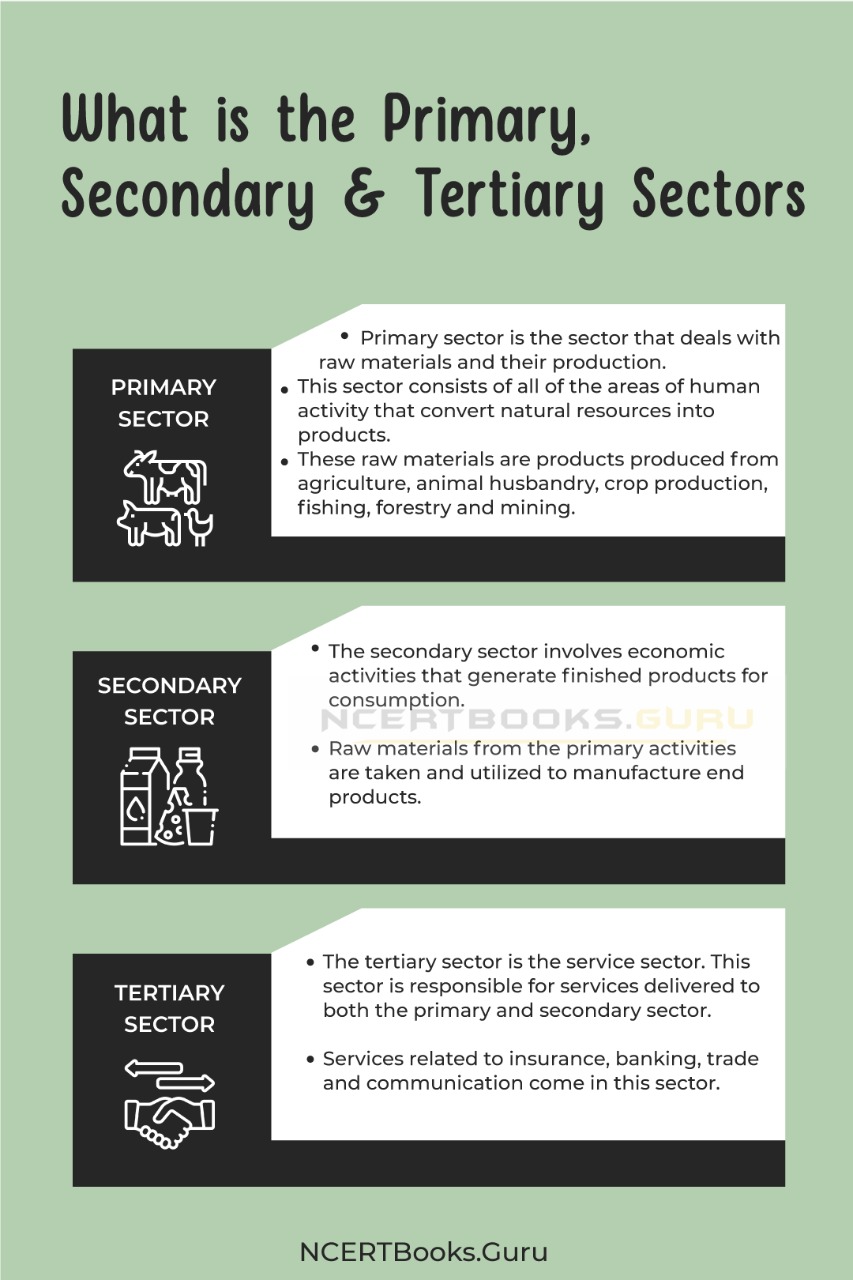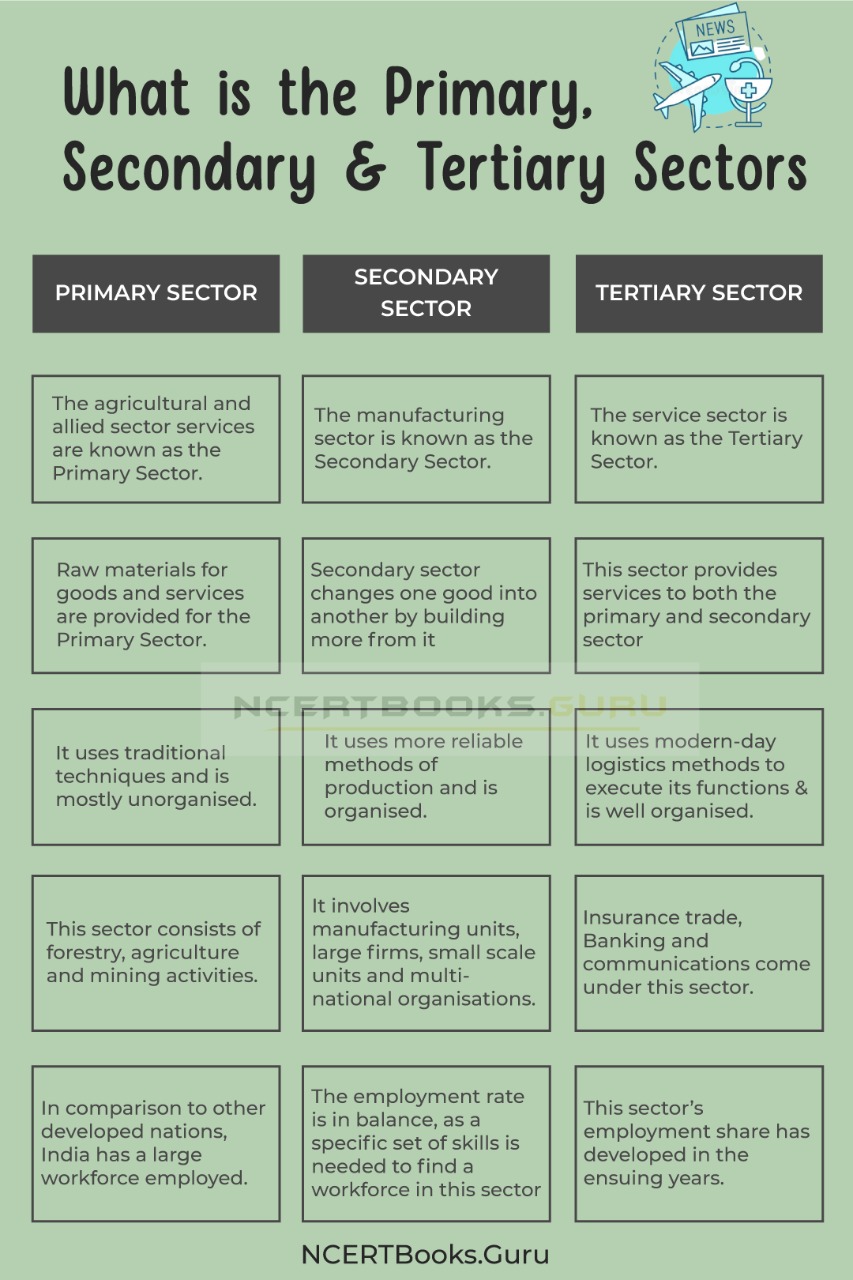Primary, Secondary and Tertiary Sectors: The primary, secondary and tertiary sectors represent different business classes and the goods they obtain and sell in an economic structure. Each sector is dependent on the other sector so that the economy as a whole works accurately and efficiently.
You can also find differences between articles on various topics that you need to know. Just tap on the quick link available and get to know the basic differences between them.
What is the Difference between Primary, Secondary and Tertiary Sectors
The primary sector provides the materials for the secondary sector. In the secondary sector, the product is then made into a consumable item, scattered by the tertiary sector.
In the early parts of the 20th century, Colin Clark and AGB Fisher, both notable economists, also spoke for these models.
Primary Sector
Primary sector is the sector that deals with raw materials and their production. This sector consists of all of the areas of human activity that convert natural resources into products. These raw materials are products produced from agriculture, animal husbandry, crop production, fishing, forestry and mining. In less advanced economies, the primary sector will include most of the economy in these areas. Generally, as the economy’s growth is achieved, there will also be an increase in labour productivity that will enable workers to leave the agricultural sector and transfer to other sectors, such as the service or the manufacturing sector.
Secondary Sector
The secondary sector involves economic activities that generate finished products for consumption. Raw materials from the primary activities are taken and utilized to manufacture end products. In further technical explanation, the secondary sector is what we call industry. It’s an important sector in most of the world economies, and it started to alter society during the industrial revolution.
Tertiary Sector
The tertiary sector is the service sector. This sector is responsible for services delivered to both the primary and secondary sector. The tertiary sector employment share has developed in the ensuing years. It is an organised sector and uses better methods. Services related to insurance, banking, trade and communication come in this sector.

Difference between Primary, Secondary and Tertiary Sectors
| Primary | Secondary | Tertiary |
| The agricultural and allied sector services are known as the Primary Sector. | The manufacturing sector is known as the Secondary Sector. | The service sector is known as the Tertiary Sector. |
| Raw materials for goods and services are provided for the Primary Sector. | Secondary sector changes one good into another by building more from it | This sector provides services to both the primary and secondary sector |
| The primary sector uses traditional techniques and is mostly unorganised. | The secondary sector uses more reliable methods of production and is organised. | This sector uses modern-day logistics methods to execute its functions and is well organised. |
| This sector consists of forestry, agriculture and mining activities. | It involves manufacturing units, large firms, small scale units and multinational organisations. | Insurance trade, Banking and communications come under this sector. |
| In comparison to other developed nations, India has a large workforce employed. | The employment rate is in balance, as a specific set of skills is needed to find a workforce in this sector | This sector’s employment share has developed in the ensuing years. |

